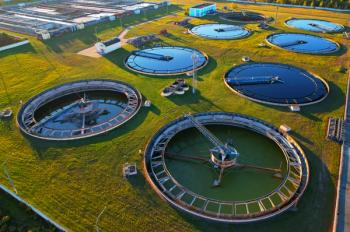
- The Column-11-07-2011
- Volume 7
- Issue 20
Separating glycoproteins using WAX chromatography
The separation of intact glycoproteins presents a great challenge because one glycoprotein can exhibit many isoforms with close physiochemical properties. As a result, it is difficult to study them in isolation. A team of chemists from Nanjing University, China, have tested a polymeric weak anion exchange (WAX) monolithic capillary to assess the high resolution separation of glycoprotein isoforms, to see whether this provides the desired results.
The separation of intact glycoproteins presents a great challenge because one glycoprotein can exhibit many isoforms with close physiochemical properties. As a result, it is difficult to study them in isolation. A team of chemists from Nanjing University, China, have tested a polymeric weak anion exchange (WAX) monolithic capillary to assess the high resolution separation of glycoprotein isoforms, to see whether this provides the desired results.1
First they prepared a base monolith through ring-opening polymerization between tris(2,3-epoxypropyl)isocyanurate and tri(2-aminoethyl). This was then modified through a reaction with an aqueous ammonia solution to convert the unreacted epoxide moieties into primary amino groups. The prepared monolithic capillary was characterised by morphology, pore size, hydrophilicity and reproducibility.
Various versions of the monolith were produced by changing the ratio of the two molecules, the temperature of the reaction and the concentration of the pore-generating molecule. The performance of the monolith capillary was then evaluated using several typical glycoproteins as mode analytes. Under the optimized separation conditions, the tested glycoproteins were all resolved into distinct glycoforms. The monolith’s separation ability was compared with capillary zone electrophoresis (CZE) and revealed that the WAX column separated more glycoforms, both consistently and at a faster speed, although the resolution of some glycoprotein isoforms decreased.
Reference
1 Zhen Liu et al., J. Chromatogr. A, September 2011, doi: 10.1016/j. chroma 2011.08.079
Articles in this issue
about 14 years ago
Agilent and Oxford Gene Technology expand partnershipabout 14 years ago
Automated DNA Sequencersabout 14 years ago
Green Chemistry with Microbore Chromatographyabout 14 years ago
Environmental contamination with steroidsabout 14 years ago
Iridoid detection in rat plasmaNewsletter
Join the global community of analytical scientists who trust LCGC for insights on the latest techniques, trends, and expert solutions in chromatography.





